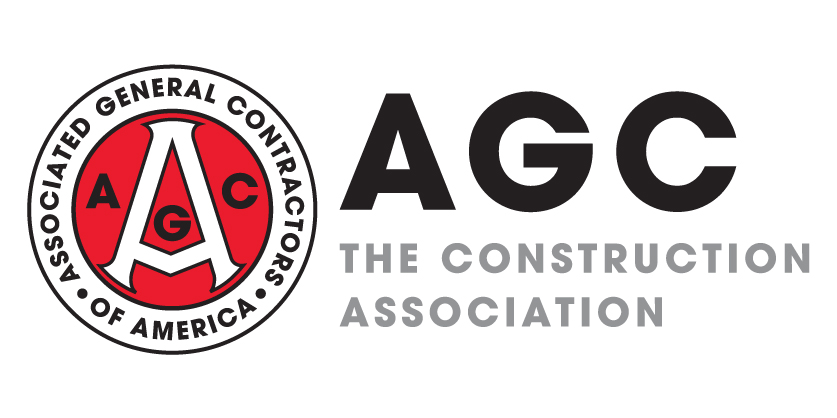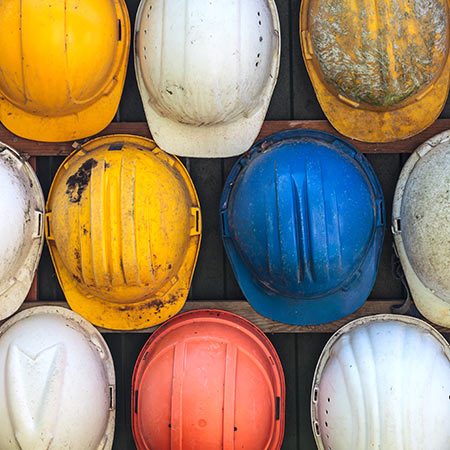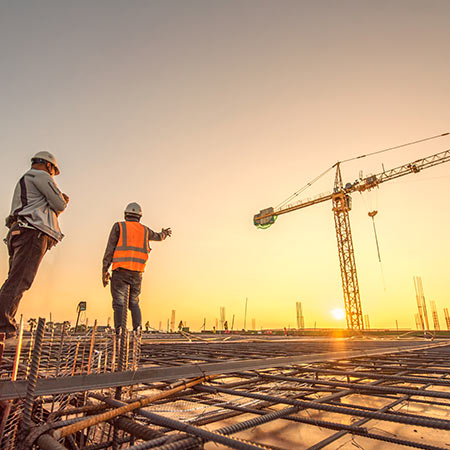
Seasonally adjusted construction employment increased from July to August in 31 states and the District of Columbia and decreased in 19 states, according to AGC’s analysis of Bureau of Labor Statistics (BLS) data posted on Friday. California added the most jobs (6,700, 0.8%), followed by New York (5,200, 1.5%) and Pennsylvania (4,100, 1.7%). New Mexico had the largest percentage increase (6.7%, 3,100 jobs), followed by Mississippi (3.4%, 1,400) and Oregon (3.1%, 3,200). Nevada lost the most construction jobs (-2,600, -2.8%) jobs), followed by Florida (-2,200 jobs, -0.4%), Tennessee (-1,900, -1.5%), Nebraska (-1,800, -3.3%) and North Carolina (-1,800, -0.8%). Hawaii had the largest percentage loss (-3.5%, -1,300 jobs), followed by West Virginia (-3.3%, -1,100), Nebraska and Nevada. From August 2019 to August 2020, construction employment increased in 10 states and D.C., decreased in 39 states, and held steady in Montana. The largest year-over-year (y/y) percentage increases again occurred in South Dakota (11%, 2,600 jobs) and Utah (8.0%, 8,800). Utah added the largest number of jobs y/y, followed by Virginia (4,400, 2.2%). California lost the most jobs over the year (-52,000, -5.8%), followed by New York (-46,000, -11%), Texas (-39,300, -5.0%) and Massachusetts (-20,200, 12%). The largest y/y percentage decline again occurred in Vermont (-30%, -4,500 jobs), followed by Massachusetts, Iowa (-12%, -9,300); Louisiana (-11%, -15,700) and New York. (BLS reports combined totals for mining, logging and construction in D.C., Delaware and Hawaii.)
The Architecture Billings Index (ABI) stayed at a seasonally adjusted reading of 40.0 for the third-straight month in August, the American Institute of Architects reported on Wednesday. AIA says, “The ABI serves as a leading economic indicator that leads nonresidential construction activity by approximately 9-12 months.” The ABI is derived from the share of responding architecture firms that report a gain in billings over the previous month less the share reporting a decrease in billings, presented as a score between 0 and 100. Any score below 50 means that firms with decreased billings outnumbered firms with increased billings. An index of the value of new signed design contracts remained below 50 but rose to 46.0 from 41.7 in July. ABI scores by practice specialty (based on three-month moving averages) also remained below 50, with small changes since July: residential (mostly multifamily), 49.4 (up from 48.6 in July); mixed, 41.9 (down from 42.7); institutional, 40.2 (up from 39.7); and commercial/industrial, 35.5 (down from 35.9).
Total construction starts (dollars) soared 19% from July to August at a seasonally adjusted annual rate, Dodge Data & Analytics reported on September 16. “Gains were seen in all three major building sectors: nonresidential building starts rose 16% and residential building climbed 12%, while nonbuilding construction jumped 40% over the month. While large projects certainly influenced the August gains, removing those projects would still have resulted in a gain for the month. Year-to-date through the first eight months of the year, starts were 14% lower than in the same period in 2019. Nonresidential starts were 24% lower and nonbuilding starts were down 20%, but residential starts were down less than” 1%.
Construction starts (dollars) tumbled 36% y/y from August 2019 to August 2020 and 20% year-to-date, data firm ConstructConnect reported on September 14. Nonresidential starts plunged 43% y/y and 27% year-to-date, with institutional starts down 25% and 15%, respectively; heavy engineering (civil) starts, -39% and -13%; commercial starts, -33% for both periods; and industrial (manufacturing) starts down 76% for both periods. Residential starts fell 20% y/y and 7.9% year-to-date, with multifamily down 53% and 22%, respectively, and single family, -2.6% and -1.4%.
Housing starts (units) slipped 5.1% at a seasonally adjusted annual rate from July to August but climbed 2.8% y/y, the Census Bureau reported on September 17. Multifamily (five or more units) starts returned to their June level after a leap in July, slumping 25% for the month and 17% y/y. Single-family starts climbed 4.1% from July and 12% y/y. Residential permits dipped 0.9% from July and 0.1% y/y, with single-family permits up 6.0% for the month and 16% y/y, and multifamily permits down 17% for the month and 29% y/y. Wells Fargo Economics commented, “Apartment construction appears to winding down, with much of the slowdown coming in construction of high-rise urban projects in larger metropolitan areas. Development is pivoting toward the suburbs, however, so activity is not headed dramatically lower.” The National Association of Home Builders (NAHB) noted, “There are currently 690,000 apartments under construction, a post-Great Recession high mark. This count will slow in the months ahead.”
“The average length of time to complete construction of a multifamily building, after obtaining authorization, is 17.3 months, according to the 2019 Survey of Construction from the Census Bureau,” NAHB reported on September 11. “The authorization-to-completion time has been on an upward trend since 2013,” when it reached a low of 12.0 months, “as regulatory challenges expanded and the skilled labor shortage challenged the industry. The average time to build multifamily homes varies with the number of units in the building. In 2019, buildings with 20 or more units took the longest time (19.0 months) to build after obtaining authorization. Properties with 10 to 19 units required 18.7 months. 5 to 9 unit buildings finished in 16.6 months, and, lastly, 2 to 4 unit buildings came in at 14.3 months….The Northeast had the longest time from authorization to completion, 20.3 months, followed by the West, 17 months;” South, 15.3 months; and Midwest, 12.9 months.




